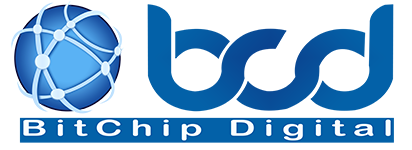
Migrating systems and processes can cause huge change in an organization. Migrations impact nearly every employee, from updating infrastructure to changing day to day workflows. For that reason, managing organizational change during a migration is imperative to a smooth transition. This involves thoughtful communication, strategic training and support structures to get staff at all levels equipped to do their job.
Communicating Early and Often
The first is to create a holistic communication plan. It’s important to give your employees plenty of warning when changes or opportunities are coming and to allow them to voice their concerns. The migration progresses, reducing uncertainty, and frequent updates.
Set Clear Expectations. Be transparent about why you’re migrating, when it will happen, and what jobs might look like. Anxiety that can torpedo the transition breeds ambiguity. Broadcast consistent information through company wide meetings and FAQ pages.
Create Feedback Loops. Don’t be one way announcements. Surveys, focus groups, and manager check ins are actively collected input. This gives you the opportunity to act on your worries before they become a problem.
Tailor for Different Audiences. Recognize that messages land differently across teams. Customize communications to resonate with sales staff, engineers, support reps, and executives. An experienced cloud migration services company can help craft targeted messaging for each group, ensuring smoother adoption across the organization.
Planning Strategic Training Initiatives
With any tech migration, employees will need to upgrade their skills. Well-planned training gets staff up to speed on new systems while serving as a morale booster during a trying time.
Start Early with Pilot Groups. Provide training access to pilot groups several months pre-launch. Their feedback helps refine materials and surfaces additional training needs.
Blend Delivery Formats. Combine eLearning modules, live virtual sessions, onsite workshops, and manager-led training. This strengthens knowledge retention by engaging staff through different mediums.
Train the Trainer. Equip managers, IT staff, and top performers to coach others through hiccups post-launch. This scalable approach prevents bottlenecks.
Supporting Staff Through the Transition
Offer resources to smooth out the change curve’s rockiest stages. This shows employees they don’t have to go it alone, especially when struggling.
Streamline Access to Experts. Create chat groups, escalation email chains, and incident reporting tools connected to migration specialists. Staff should feel supported at their moment of need.
Develop Feedback Channels. Solicit user feedback through pulse surveys and open office hours. This allows you to quickly resolve pain points and improve the rollout.
Highlight Quick Wins. Look for small yet meaningful functionality improvements to highlight. Early successes, even in limited domains, can demonstrate the migration’s benefits.
Key Training Focus Areas
The specifics of each migration training plan vary extensively based on the systems and workflows being updated. However, the following topics often prove critical.
New Software Platform Capabilities. Demonstrate how leveraging new features can make teams more productive after overcoming the learning curve.
Changes to Cross-Functional Processes. Detail how the migration alters hand-offs between departments, requiring workstream coordination.
Updated Governance Processes and Policies. Review policy and process changes related to access controls, data management, quality compliance, etc.
Job-Specific Workflows. Break down how daily routines and tools transform for individual contributor and management roles across the company.
Executing a Migration Training Rollout
Training tied to a migration should follow leading practices in instructional design while also accounting for organizational change factors.
Incorporate Active Learning. Combine lectures, demonstrations, case studies, and hands-on labs so learners immediately apply concepts.
Chunk Content into Managable Sections. Shorter, focused lessons are less overwhelming than marathon sessions.
Plan for Just-in-Time Refreshers. Schedule refresher courses and support assets to launch in the weeks following the migration.
Monitor and Test Comprehension. Use surveys, knowledge checks, and skills assessments to gauge proficiency and identify gaps.
Incentivize Peer Support. Foster collaboration through mentoring programs, team training exercises, and chat tools.
Managing Organizational Change During Migrations
Organizations have to have holistic change management plans for migrations that significantly affect operations, culture and strategy beyond training.
Launch Transition Workgroups. Bring together cross functional teams to coordinate on training, processes updates, communication, and troubleshooting.
Phase Rollouts Gradually. Pilot launch a subset of teams first, then quickly scale. It brings to the surface lessons learned at smaller scale.
Make Quick Support Options stand out. Provide pop up coaching, chatbots and expedited ticket handling until staff get used to new systems.
Bring in Executive Sponsorship. Communicate and make the migration visible to employees, so they know leadership is firmly behind the migration.
Incorporate Change Agents. Promote adoption among teams by identifying well connected mid level managers across divisions. They pass critical feedback to decision makers.
Analyze Performance Impacts. Prior, during, or after the migration, quantify the business impacts of Track productivity and operational metrics.
Keep the Momentum Post Launch. Those coming up to you after the months following go live with you need to continue those change management initiatives and training refreshers to cement adoption.
Key Questions for Assessing Migration Readiness
Before kicking off a migration, organizations should feel confident they have covered all their bases. Some key questions leaders should ask themselves include:
- Have we aligned executives and frontline managers on the “why” behind this change?
- What reskilling opportunities exist for employees whose roles will be altered?
- Which teams have reserves to backfill key staff if training pulls them offline?
- How will we support employees struggling with the transition?
- Do we have quick response protocols to address migration issues?
- How will we confirm new behaviors cement post-launch?
Only with “yes” answers across the board should leaders greenlight a migration launch.
Pitfalls to Avoid When Training Staff on New Systems
In 2023, the market for cloud migration services was estimated to be worth USD 10.91 billion. The market is projected to expand at a compound annual growth rate (CAGR) of 23.9% from USD 12.54 billion in 2024 to USD 69.73 billion by 2032. However, even with thorough planning, not every migration training initiative goes smoothly. Being cognizant of these common pitfalls can help organizations sidestep them:
Failing to Train Managers and Leadership
If people managers don’t understand updated systems and processes, they can’t reinforce learnings. Without leadership buy-in, the rank-and-file won’t prioritize new behaviors. Consider special prep sessions for managers on how to support their direct reports through migration challenges.
Assuming Proficiency Too Quickly
Don’t equate an initial training course completion with mastery. Follow up through testing, refreshers, and audits over the next quarter to cement proficiency. Refresher courses should focus on common trouble areas.
Delivering Training Too Early or Too Late
Launching training too early often leads to knowledge loss prior to migration, requiring wasteful retraining. But waiting too long leaves employees disoriented and frustrated. Schedule training in the 4-8 week window before migration.
Not Customizing for Different Roles
One-size-fits-all training fails to resonate across unique roles with specialized needs. Tailor content with relevant examples and breakout sessions focused on role-specific workflows.
Skipping Post-Launch Support Structures
Chat forums, coaching resources, job aids and quick start guides are vital as staff apply classroom learnings to real-world scenarios. Standing up these assets pre-launch ensures users transition smoothly without bottlenecks.
Focusing Only on Technical Skills
Don’t overlook mindset shifts during migrations. Changes to underlying beliefs and assumptions require different change management tactics like executive role modeling.
Launching Before Infrastructure is Ready
Nothing frustrates more than previewing slick new tools that then crash under load. Delay training kickoffs until system stability passes rigorious testing thresholds.
With awareness of these stumbling blocks, organizations can sidestep common mistakes and set training initiatives up for success. Migrations challenge even well-prepared employees, so cover all the bases.
Conclusion
Sometimes migrations are seismic shifts for organizations and employees as well. It overturns entire ways of working, which means new mindsets, new skills, new tools. This understandably creates uncertainty and even resistance without proper support.
That’s why managing organizational change through communication, training, and transition resources is so important. To do that, leaders must paint a compelling picture of the future state and empathise with valid concerns. To support workers crossing the capability gap as roles change, ongoing training and coaching is provided. Sufficient post go live support means employees don’t stall out in the stormy stages of change.
